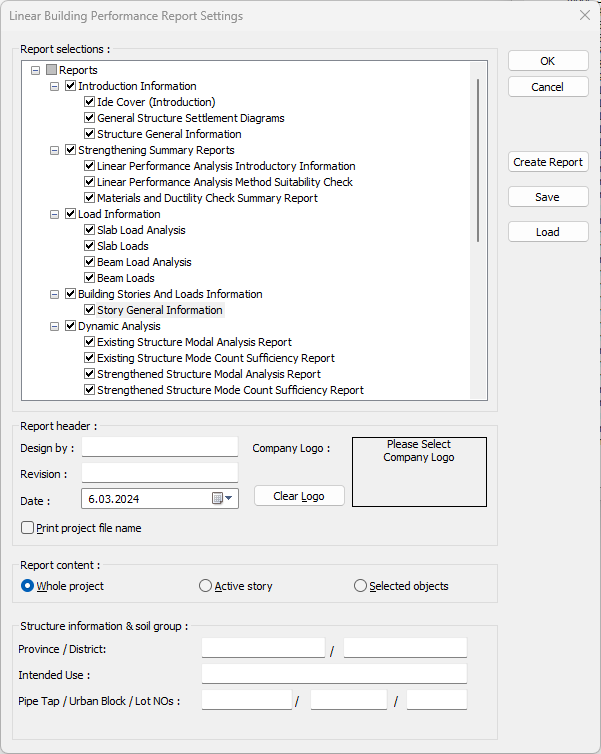Linear Performance Analysis
By using the Linear Performance Analysis command, linear performance analysis and element ductility checks are made in existing structures and reinforced structures with the Evaluation and Design Based on Deformation (GDT) approach. By using the moment-curvature relationship, the yield moment and yield curvature of the elements are calculated and the element curvature demand and the structure performance target are determined.
Linear Performance Analysis Command Location
You can access the Linear Performance Analysis command under the Analysis heading of the Ribbon menu Analysis and Design tab .

Usage Steps
Click the Linear Performance Analysis icon under the Analysis Design icon.
The Analysis Settings dialog Strengthening options tab will open.

Click the OK button after making the selections suitable for your project.
The question whether your project is completed will appear on the screen.

When the OK button is clicked, the program will start the Linear Performance Analysis. Pressing the No button will cancel the process.
After Linear Performance Analysis has started, the Structural Analysis Status window will open. Operation steps can be followed from this window.
After the analysis is finished, click the OK button in the Structural Analysis Status window.
The Linear Building Performance Report Settings will be displayed.

After selecting the appropriate report titles, click the Cerate Report button. Performance analysis results will be given in a report format.
Strengthening Options Tab

Specifications |
|---|
Use beam table sections  If it is marked, the section of the beam in performance analysis is taken into account as a table section and the reinforcements of the slab in the table are added to the existing reinforcement areas of the beams. If it is not marked, the cross section of the beam is accepted as rectangular section and the reinforcements of the slab in the tray are not included in the existing reinforcement areas of the beams. |
Use crossties for Vr calculation  If marked, the crossties in the column in the performance analysis are added to the column stirrup and taken into account in the column Vr calculation. If not checked, it will not be taken. |
Use Caltrans idealized model  If marked, yield moment My and yield curvature ϕy values used in linear performance analysis are used as idealized values in moment-curvature analysis. The green curve in the Moment-curvature tab of the reinforced concrete design window is the idealized curve of a cross-section for which moment-curvature analysis has been performed. |
Building information level  The information level of the building is selected according to the conditions defined in the heading of Collecting Information from Buildings. Knowledge level coefficients by choice; Limited = 0.75 and Comprehensive = 1.00. |
Override beam reinforcement percentages  If the option is selected, the beam capacity moments in performance analysis are calculated by taking into account the given percentage values. The upper section refers to the upper region, and the lower to the lower region of the section. |
Override column reinforcement percentages  If the option is selected, column capacity moments in performance analysis are calculated by taking into account the given percentage values. |
Override shearwall reinforcement percentages  If the option is selected, curtain capacity moments in performance analysis are calculated by taking into account the given values. |
Reinforcement realization ratio  If the reinforcement realization coefficient is entered, the existing reinforcement areas (whether the reinforcement is entered in the reinforced concrete dialog or calculated according to the defined pursuit) are multiplied by these coefficients and the capacity calculations are made according to these values. The transverse and longitudinal reinforcement coefficients can be given separately for beams, columns and walls. |
Load combination options  If the Use vertical seismic effects option is checked, the combination of vertical earthquake effects (0.30Ez) is also included in the combination of current fixed, live loads and horizontal earthquake effects when creating loading combinations in the performance analysis. |
Next Topic
